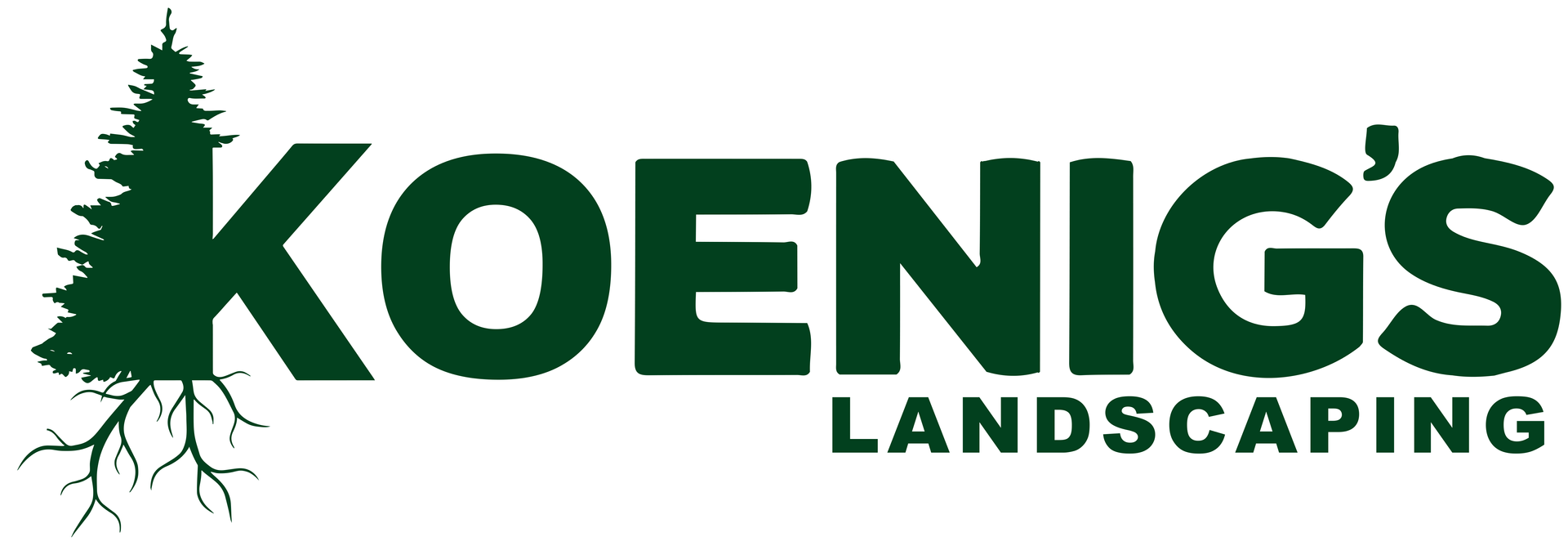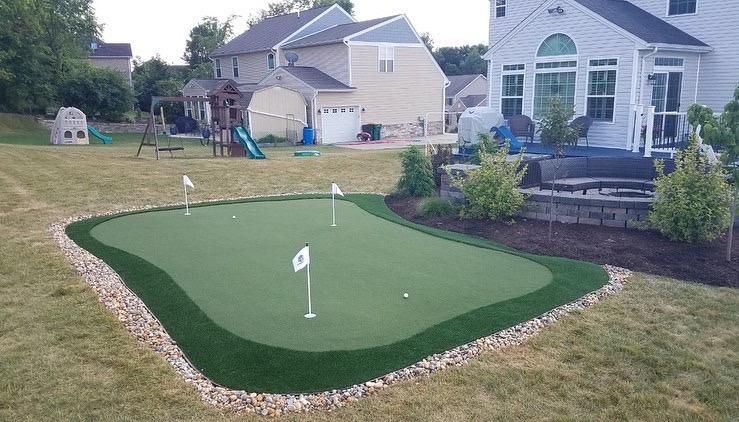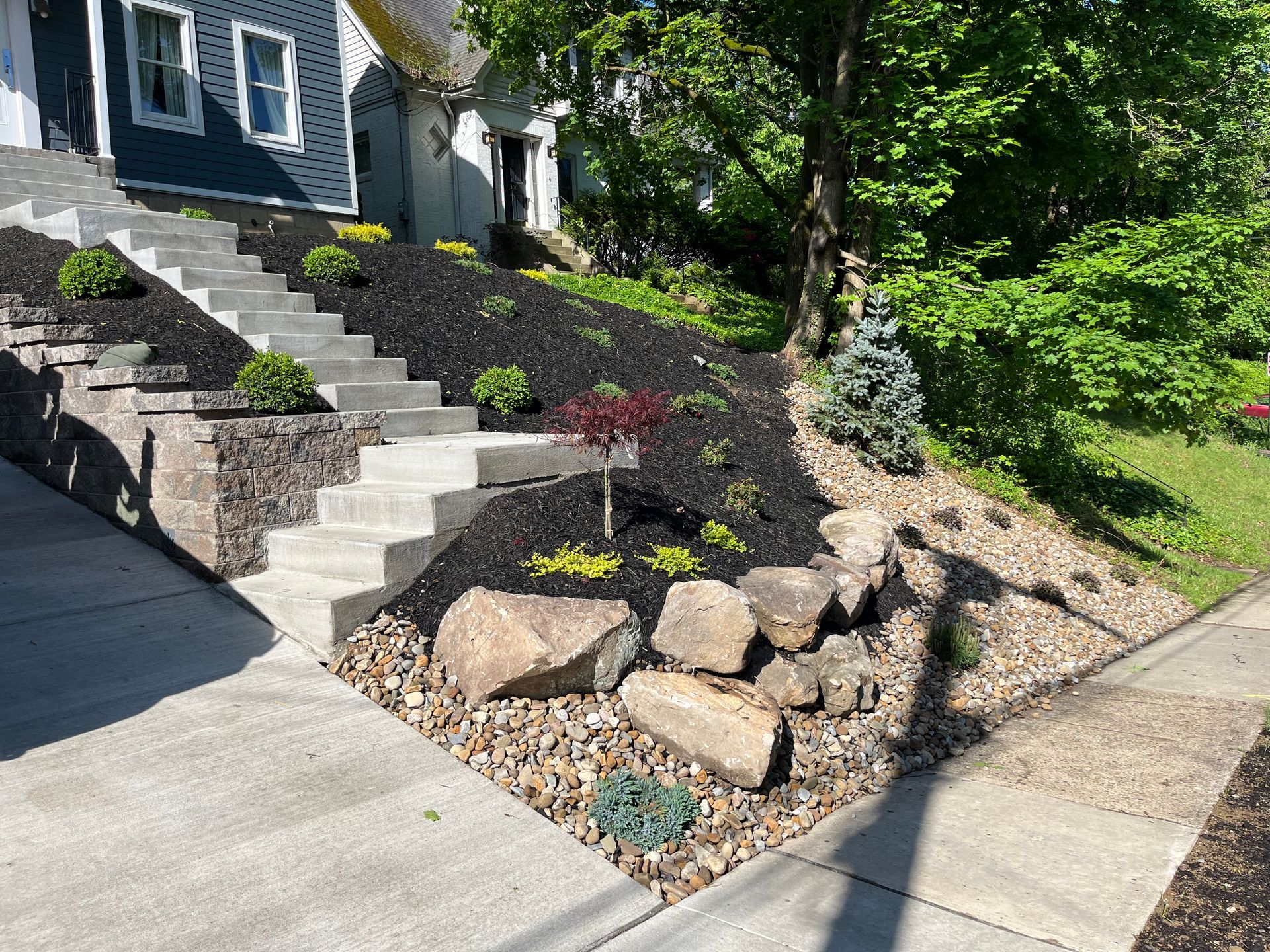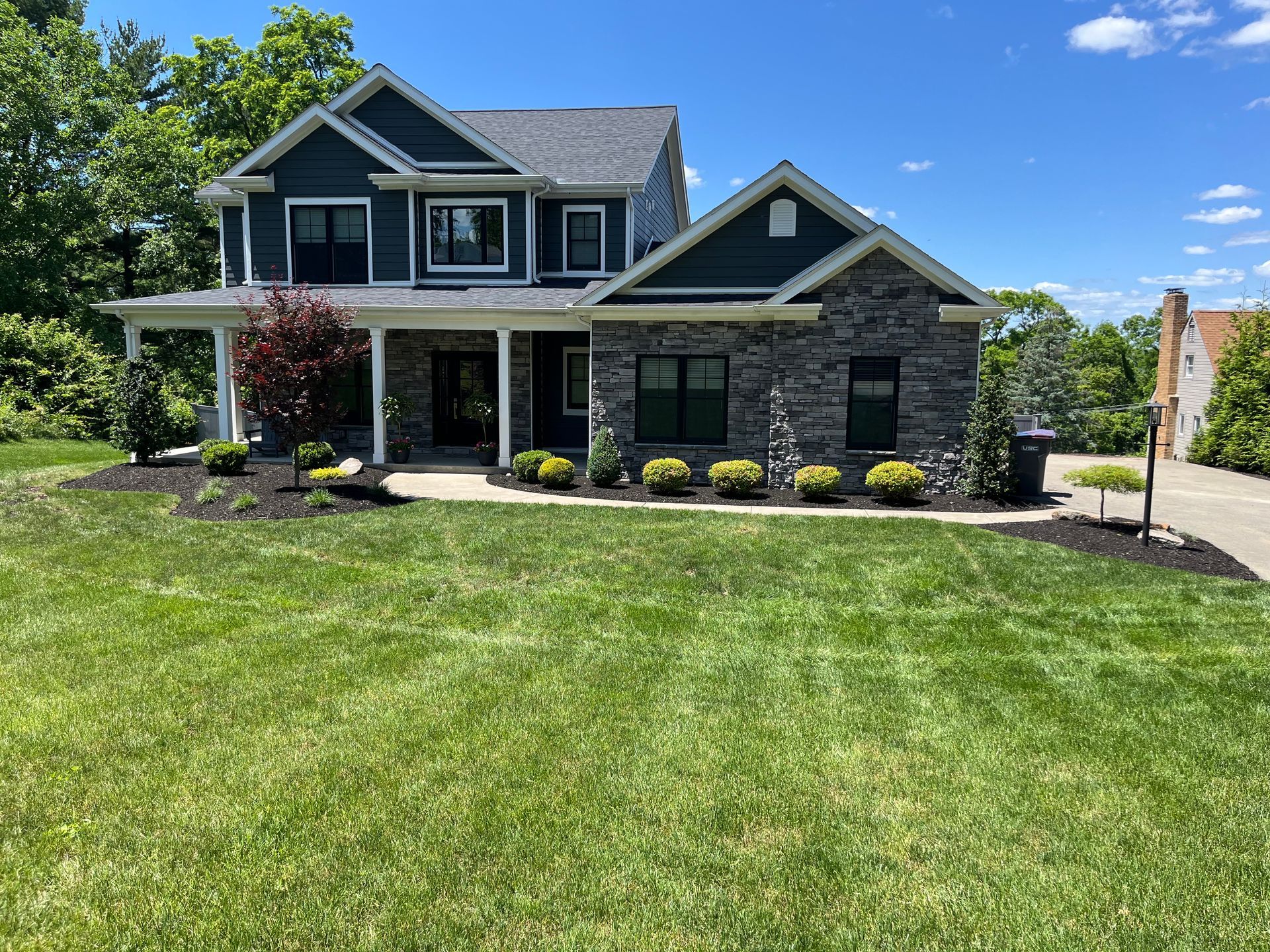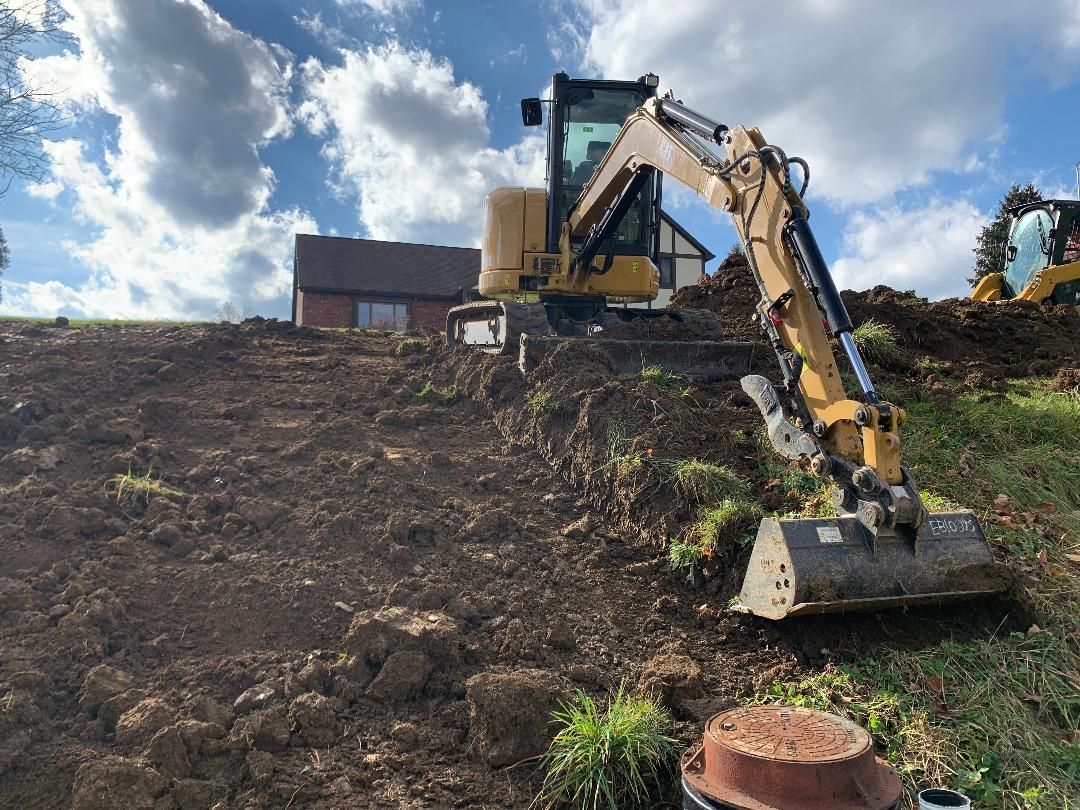Benefits of Synthetic Turf Installation for Your Business

Business environments are no longer confined to the conventional four walls and a ceiling. Sprawling lawns, inviting outdoor spaces, and greenery have become essential aesthetics of corporate imagery.
However, maintaining natural grass can be a resource-intensive practice, which is why an increasing number of businesses are turning to synthetic turf for a green, sustainable upgrade. In this comprehensive guide, we'll explore how synthetic turf isn't just a landscaping alternative; it's a strategic investment in your business's appeal, sustainability, and cost-effectiveness.
Understanding Synthetic Turf
What is Synthetic Turf?
Synthetic turf, often referred to as artificial grass, is a surface of synthetic fibers designed to look like natural grass. It's commonly used in sports fields, golf courses, and residential landscapes. The types of fibers used for synthetic turf include polyethylene, polypropylene, and nylon. These fibers are combined with a backing material and infill to create a durable, realistic-looking grass surface.
Comparison with Natural Grass
The difference is more than just visual. Synthetic turf requires no watering, no mowing, and no pesticides, which means not only lower costs but also less environmental impact. Additionally, its durability makes it usable year-round, leaving behind the challenges of uneven natural surfaces. Turf won't succumb to issues that natural grass faces, such as disease, pests, and fungus.
Key Benefits of Synthetic Turf for Businesses
Low Maintenance Costs
One of the most tangible benefits is the reduction in maintenance expenses. Unlike real grass, synthetic turf is resistant to wear, UV rays, and varying weather conditions. This means no more overgrown patches, muddy spots, or costly watering bills. You also won't need to worry about mowing or treating the lawn with pesticides to keep it looking its best, saving you both time and money!
All-Weather Durability
In climates with extreme temperatures, the seasonal changes can wreak havoc on natural grass. Synthetic turf, however, stays lush and green, providing a consistent, polished look that is crucial for maintaining an image of reliability and consistency. No need to worry about the harsh Pittsburgh winters or hot summers damaging your lawn.
Aesthetic Appeal
The natural beauty of grass improves the ambiance of any business space. Synthetic turf preserves this appeal without the downsides, such as discoloration or the need for herbicides, offering a pristine, green expanse that's inviting and refreshing.
Businesses That Can Benefit from Synthetic Turf
Putting Greens
Golf enthusiasts covet a putting surface that's smooth and consistent. Synthetic turf offers this, ensuring that every putt feels as true as if it were on the finest of golf courses. Synthetic turf offers uniformity and minimal upkeep that makes it a great surface for avid golfers.
Places like resorts, sport complexes, and private clubs are ideal locations for synthetic turf putting greens to keep a clean and stylish look for guests while reducing your maintenance costs so you can focus on other aspects of maintaining your facility.
Dog Parks
For furry friends who love to run, play, and dig, durability is essential. Synthetic turf can withstand the most enthusiastic of dog-related activities while still being easy to maintain, ensuring pet areas are always clean and appealing. This material is a great addition to any dog park or veteranary clinic that needs an easy to clean and maitain area for their furry customers.
Indoor Gyms
Sports activities like sled pushing, agility drills, and general workouts can take a toll on traditional gym floors. Artificial turf provides a durable, easy-to-clean alternative. In addition to the minimal maintenance, turf provides a safer, more shock-absorbing surface for those who are playing or training.
Children's Playgrounds
Safety is paramount in kids' play spaces. Synthetic turf's cushioning effect and non-toxic materials make it an ideal surface for play areas, significantly reducing the risk of injuries from falls. Additionally, artificial turf eliminates the need for harmful chemicals and pesticides that are often used on natural grass. This makes it a safer and more environmentally friendly option for children's playgrounds.
Around Pool Areas
Natural grass struggles to thrive in the humid conditions near pool areas, often leading to mud and debris falling into the water. Synthetic turf resolves this, providing a clean, dry area around your pool that requires minimal maintenance.
Installation Process
Site Preparation
Installing synthetic turf starts with impeccable site preparation. This includes excavation, drainage, and ensuring a solid, level base to promote proper turf installation and drainage. More details about these steps include:
1. Excavation: The first step in preparing the site for synthetic turf installation is to excavate the area. This involves removing any existing grass, rocks, or debris from the surface.
2. Drainage: Proper drainage is crucial for synthetic turf installation, especially around pool areas. This involves creating a slope or adding drainage pipes to ensure water does not pool on the surface.
3. Solid Base: A solid and level base is essential for a successful synthetic turf installation. This can be achieved by using crushed rock or gravel as a base layer and compacting it thoroughly.
Installation Techniques
Once the site has been properly prepared, the installation process can begin. Our expert team will complete the following steps:
1. Unroll Turf: The first step in installing synthetic turf is to unroll the turf onto the prepared area. We make sure to lay it in the same direction to avoid any visible seams.
2. Cut and Trim: Next, using a sharp utility knife we cut the turf to fit around any obstacles, such as trees, rocks, or structures. This is also the time to trim any excess edges for a clean finish.
3. Lay Down Edging: To keep the turf in place and prevent it from shifting, we install edging around the perimeter of the area. This can be done with plastic or metal edging, depending on personal preference.
4. Secure Turf: Once the edging is in place, we use landscaping stakes or nails to secure the edges of the turf every 6-8 inches along the perimeter. This helps to secure the turf so it does not shift over time.
5. Add Infill: To give the artificial turf a more natural look and feel, it is recommended to add infill material such as sand or rubber pellets. This also helps with drainage and adds weight to keep the turf in place.
6. Brush and Fluff: Use a stiff brush or power broom to brush and fluff up the fibers of the turf. This will help make the turf look fuller and more natural.
7. Enjoy Your New Turf: With proper installation, your synthetic turf should provide you with a beautiful, low-maintenance lawn for years to come!
Post-Installation Care
Maintenance Tips
To maintain the look and feel of synthetic turf, a few care practices are essential. Regular brushing to keep the fibers upright and infill evenly distributed is crucial. Other maintenance that is recommended includes:
1. Debris Removal: Regularly remove leaves, twigs, and other debris from the turf surface. This can be done with a leaf blower or by hand, depending on the size of your lawn.
2. Rinse off Pet Waste: If you have pets that use the turf as their bathroom, it's important to rinse off any waste regularly to prevent odor buildup and potential damage to the turf.
3. Spot Cleaning: For minor spills or stains, spot cleaning with water and mild soap is usually sufficient. Avoid using harsh chemicals or bleach as they may discolor or damage the turf fibers.
4. Prevent High Heat Exposure: Synthetic turf can get very hot in direct sunlight, so it's important to avoid placing hot objects like grills or fire pits directly on the turf surface. This can cause melting or burning of the turf fibers.
5. Brushing: Regularly brushing the turf will help to keep the fibers upright and maintain a natural appearance. Use a stiff bristle brush and brush against the direction of the blades for best results.
6. Address High Traffic Areas: If there are areas of your turf that receive high foot traffic, it's important to address them promptly by brushing and fluffing up the fibers to prevent matting and wear.
7. Keep Sharp Objects Away: Avoid using sharp objects such as knives or scissors on your synthetic turf, as they can cut or damage the fibers.
8. Check for Damage: Periodically check your turf for any signs of damage, such as tears or holes. If any are found, they should be repaired immediately to prevent any further damage.
Addressing Wear and Tear
Though synthetic turf is robust, there may be areas that experience more traffic. These high-use areas can benefit from specialized maintenance, such as grooming or adding more infill, to extend their life.
Investing in Your Business's Future with Koenig's Landscaping
Synthetic turf isn't just a passing trend; it's an investment that can redefine your business environment. The benefits are clear—lower operational costs, higher aesthetic values, and enhanced usability throughout the year.
Imagine a world without the worry of maintaining natural grass and the constant upkeep it involves; synthetic turf offers that and so much more. Take the leap and transform your business into a sustainable, welcoming, and cost-efficient space that reflects the best of modern business practices.
Koenig's Landscaping is ready to assist you in this green revolution. Our team of experts will guide you through the installation process, offering tailored solutions to meet your business's unique needs.
To learn more about the endless possibilities synthetic turf brings to commercial spaces, reach out for a consultation.
ABOUT KOENIG'S LANDSCAPNG
We pride ourselves on the highest quality work while upholding honesty and professionalism. Our crews are built with friendly and knowledgeable employees, so you feel comfortable through the whole process.
